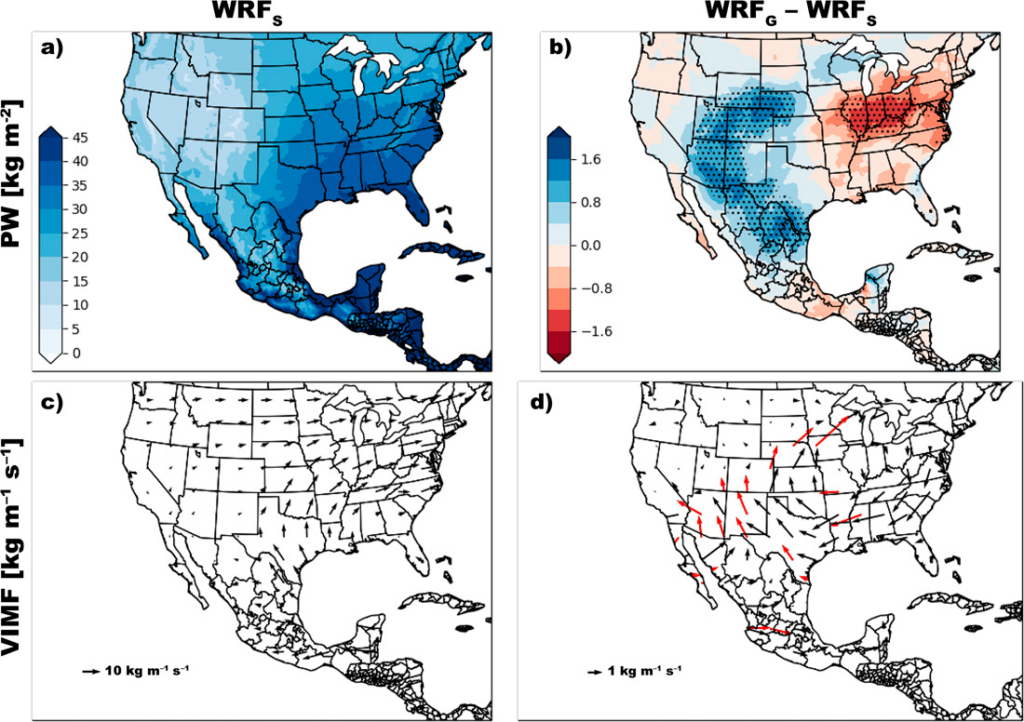
ESSIC/CISESS Scientists Eli Dennis (a former CISESS grad student), and Hugo Berbery have a new article published in the May 2022 issue of the Journal of Hydrometeology critiquing how models represent soil attributes.
Soil hydrophysical properties are necessary components in weather and climate simulation, yet the parameter inaccuracies may introduce considerable uncertainty in the representation of surface water and energy fluxes. This study uses seasonal coupled simulations to examine the uncertainties in the North American atmospheric water cycle that result from the use of different soil datasets. The researchers considered two soil datasets: The State Soil Geographic dataset (STATSGO) from the U.S. Department of Agriculture and the Global Soil Dataset for Earth System Modeling (GSDE) from Beijing Normal University. They conducted two simulations from 1 June to 31 August 2016–18 using the Weather Research and Forecasting (WRF) Model coupled with the Community Land Model (CLM) version 4 and applying each soil dataset.
The researchers found that changes in soil texture lead to statistically significant differences in daily mean surface water and energy fluxes. The boundary layer thermodynamic structure responds to these changes in surface fluxes resulting in differences in mean Convective Available Potential Energy (CAPE) and Convective Inhibition (CIN), leading to conditions that are less conducive for precipitation. The soil-texture-related surface fluxes instigate dynamic responses as well. Low-level wind fields are altered, resulting in differences in the associated vertically integrated moisture fluxes and in vertically integrated moisture flux convergence in the same regions. Through land–atmosphere interactions, it is shown that soil parameters can affect each component of the atmospheric water budget.
At the time of writing, Eli Dennis was a graduate student in CISESS and AOSC working under his advisor, Dr. E. Hugo Berbery. Currently, Eli Dennis is a Postdoctoral Scholar at the Center for Climate Science, UCLA. His ongoing work relates land-atmosphere interactions to drought intensity and duration in the Western United States.
E. Hugo Berbery is a Research Professor at ESSIC and Deputy Director of the Cooperative Institute for Satellite Earth System Studies (CISESS). He is also affiliated with AOSC, where as an Adjunct Member of the Graduate Faculty, he advises graduate students and mentors undergraduate students. He has research interests in large scale dynamics, regional hydroclimate variability, and land surface-atmosphere interactions.
To access the article, click here: “The effects of soil representation in WRF/CLM on the atmospheric moisture budget”.





